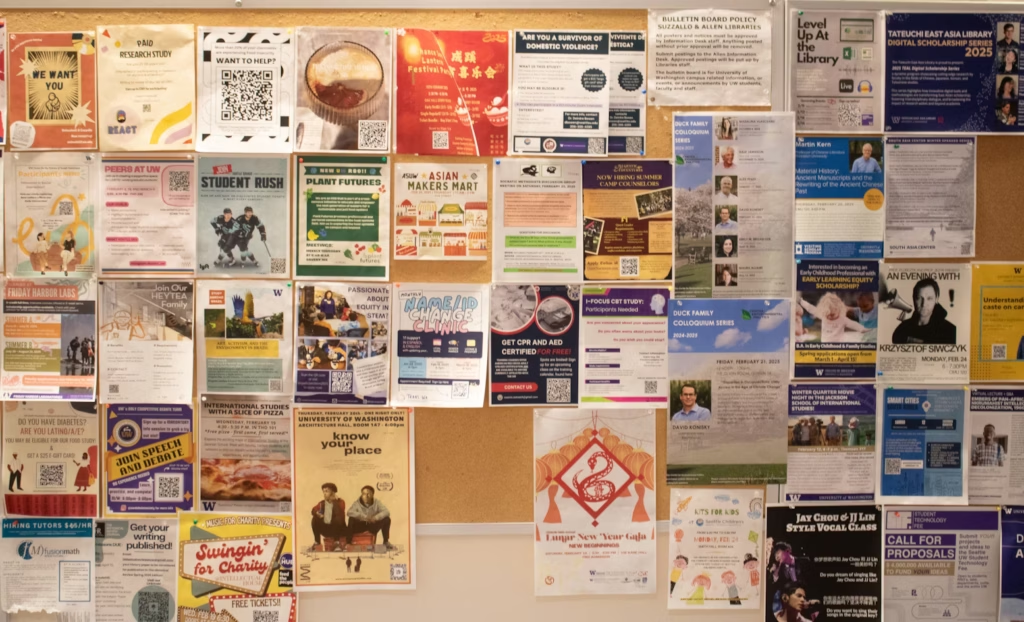
Visual methods in qualitative research use images and videos to enrich data collection and analysis, fostering a deeper and more inclusive understanding of social phenomena. They challenge traditional approaches, but also raise ethical questions about privacy and consent.
Introduction
In recent years, qualitative research has expanded to include a variety of innovative methods that go beyond the simple collection of textual data. Among these methods, visual methods have emerged as powerful tools that enable a richer and more multifaceted understanding of social phenomena. This article explores the importance of visual methods in qualitative research, discussing their definitions, applications, ethical challenges, and future implications. The adoption of visual methods can lead to new forms of engagement and interpretation, challenging traditional approaches and promoting more inclusive and reflexive research.
What are Visual Methods?
Visual methods refer to techniques that use images, videos, and other visual elements as research data. These methods not only complement textual narratives but also offer a new dimension of interpretation, engaging both analytical and emotional aspects. Visual research, by including the perspective of participants, promotes a more reflexive and collaborative approach, challenging the traditional dichotomy between researcher and subject.
Definitions and Concepts
- Visual Methods: Techniques that use images, videos, and other visual elements as research data. For example, participatory photography allows participants to capture their experiences, offering a more authentic view of their realities.
- Content Analysis: A method that explores meanings and patterns in qualitative data, including images. A study might analyze photographs to identify recurring themes in participants' experiences.
- Social Representations: How groups and individuals perceive and interpret social phenomena through images. One example is the analysis of how different cultures represent the family in photographs.
The Historical Evolution of Visual Methods
Historically, visual methods gained prominence in interpretive anthropology in the 1960s, when researchers began to recognize the importance of including the perspective of the subjects studied. Since then, visual research has become an area of growing interest, especially with the advent of digital technologies and social networks. The democratization of image production and greater participation of subjects in research are some of the consequences of this evolution.
Advantages of Visual Methods Over Traditional Methods
Traditional data collection methods, such as interviews and questionnaires, have their limitations. They often fail to capture the complexity of human experiences. In contrast, visual methods allow participants to express their perceptions in a more authentic and rich way. For example, a study that uses photographs taken by participants can reveal emotional and contextual nuances that simple verbal descriptions cannot convey. Additionally, using drawings in qualitative interviews can serve as a starting point for deeper discussions, allowing participants to express their experiences in a more meaningful way.
Examples of Studies that Used Visual Methods
One notable example is the work of researchers who have used participatory photography to explore the experiences of young people in marginalized communities. By allowing young people to take photographs of their daily lives, researchers have been able to gain deep insights into their realities, challenges, and aspirations. Another example is the use of video to document cultural practices, allowing for a complex analysis of social interactions and community dynamics. Studies that explore gender relations through visual methods, such as photo-elicitation and photovoice, also demonstrate how images can materialize social practices and interactions, providing new insights into gender construction and social experience.
Ethical Challenges Associated with the Use of Visual Methods
While visual methods offer many advantages, they also present significant ethical challenges. Privacy and consent are crucial issues that researchers must consider. It is essential to ensure that participants are aware of how their images will be used and that they have the option to opt out if they are uncomfortable. Furthermore, visual representation can be problematic. Images can be interpreted differently depending on the cultural and social context. Therefore, researchers must be aware of how their visual choices can influence the interpretation of data and the representation of participants. For example, in a study of indigenous communities, the choice of images can affect the external perception and self-image of participants.
The Importance of Content Analysis in Qualitative Research
Content Analysis is a fundamental technique in qualitative research, allowing the interpretation and understanding of textual and visual data in a systematic way. This approach is applied to the identification of patterns, themes and meanings present in different types of content, such as interviews, documents and social media. By transforming raw information into meaningful insights, Content Analysis becomes a powerful tool for researchers seeking to deepen their investigations.
Stages of the Analytical Process
To ensure a Content Analysis effective, it is crucial to creatively and rigorously integrate the steps of the analytical process. These steps include:
- Definition of the Research Problem: Clearly establish what you want to investigate.
- Data Collection: Use visual and textual methods to gather relevant information.
- Codification: Identify and categorize themes and patterns in the data.
- Interpretation of Results: Analyze data in light of the context and research questions.
Each of these steps must be carried out with attention to detail, ensuring that the analysis not only answers the research questions but also contributes to a deeper understanding of the phenomenon studied.
Contributions to Theoretical and Practical Development
Promoting a more qualified use of Content Analysis can have a significant impact on the theoretical and practical development of qualitative research. This approach not only enriches the conceptual repertoire on the topics investigated, but also strengthens the production of knowledge in the educational field. By adopting a more reflective and contextualized investigation, researchers can generate insights that go beyond the surface, contributing to more informed and effective educational practices.
Future Implications of Visual Methods
The increasing accessibility of visual tools and the popularization of social media may lead to an increased use of visual methods in many research areas. This may result in greater diversity of data and the inclusion of voices that have not traditionally been heard. As more researchers adopt these methods, new approaches and techniques are likely to emerge, further enriching the field of qualitative research.
Tips for Researchers
- Encourage Active Participation: Encourage subjects to participate in creating images to enrich the research.
- Ethical Issues: Be mindful of ethical issues, especially regarding privacy and consent.
- Use Analysis Software: Tools that integrate visual data can facilitate interpretation and analysis.
Conclusion
Visual methods in qualitative research offer an innovative and effective approach to data collection and analysis, enabling a deeper understanding of social phenomena. By integrating images into research, researchers can capture nuances that often escape textual analysis, fostering more inclusive and reflective research. The continued evolution of visual technologies promises to further expand the possibilities of qualitative inquiry in the future, challenging researchers to rethink their approaches and explore new ways of engaging with participants.
In short, visual methods are not just an addition to traditional methods, but a transformation in the way we understand and interpret the complexity of human experience. By embracing this approach, researchers can not only enrich their investigations, but also contribute to a broader and more diverse dialogue within the academic community.
References
Bansal, P., Smith, W. K., & Vaara, E. (2018). New Ways of Seeing through Qualitative Research. Academy of Management Journal, 61(4), 1189-1195. https://doi.org/10.5465/amj.2018.4004
Brailas, A. (2020). Using Drawings in Qualitative Interviews: An Introduction to the Practice. The
Qualitative Report, 25(12), 4447-4460. https://doi.org/10.46743/2160-3715/2020.4585
Glegg, SMN (2019). Facilitating Interviews in Qualitative Research With Visual Tools: A Typology. Qualitative Health Research, 29(2):301-310. https://doi.org/10.1177/1049732318786485
Guetterman, T. C., Fabregues, S., & Sakakibara, R. (2021). Visuals in joint displays to represent integration in mixed methods research: A methodological review. Methodology, 5, 100080.
Martikainen, J. (2019). Visual Arts-Based Research Methods in Social Science Research. PEOPLE: International Journal of Social Sciences, 5(2), 323-345. https://doi.org/10.20319/pijss.2019.52.323345
MacIsaac, J. (2021). Picturing femininities and masculinities: Using visual methods to explore gender relations. Methodology, 1(1), 100079. https://doi.org/10.1016/j.metip.2021.100079
Shannon-Baker, P., & Edwards, C. (2018). The Affordances and Challenges to Incorporating Visual Methods in Mixed Methods Research. American Behavioral Scientist, 62(7): 935-955. http://10.1177/0002764218772671
FAQ – Visual Methods in Qualitative Research
What are visual methods in qualitative research?
Visual methods refer to techniques that use images, videos, and other visual elements as research data. They complement textual narratives and offer a new dimension of interpretation, promoting a more reflective and collaborative approach.
What are the advantages of visual methods over traditional methods?
Visual methods allow participants to express their perceptions in a more authentic and rich way, revealing emotional and contextual insights that may be overlooked in verbal descriptions. They also encourage greater subject participation in the research.
How is content analysis applied in visual methods?
Content analysis is a technique that allows the systematic interpretation of textual and visual data. It involves identifying patterns, themes and meanings present in images and videos, transforming raw information into meaningful insights.
What are the ethical challenges associated with using visual methods?
Key ethical challenges include issues of privacy and consent. Participants must be made aware of how their images will be used and given the option to opt out if they are uncomfortable.
What tips should researchers who want to use visual methods consider?
- Encourage subjects to actively participate in creating images.
- Be mindful of ethical issues, especially regarding privacy and consent.
- Use analysis software that integrates visual data to facilitate interpretation.
How does the evolution of visual technologies impact qualitative research?
The increasing accessibility of visual tools and the popularization of social media can expand the use of visual methods, resulting in greater diversity of data and the inclusion of voices that have traditionally not been heard.
What are some examples of studies that used visual methods?
One notable example is the use of participatory photography to explore the experiences of young people in marginalized communities. Another example is the use of video to document cultural practices, allowing for a broader analysis of social interactions.
How important is social representation in visual research?
Social representations help us understand how groups and individuals perceive and interpret social phenomena through images. This is crucial for analyzing how different cultures represent themes such as family, for example.


